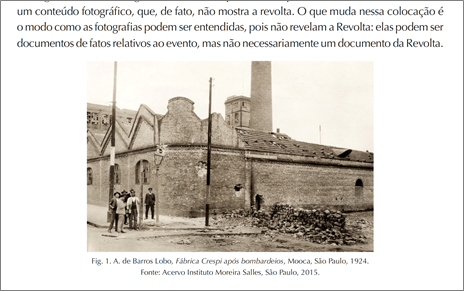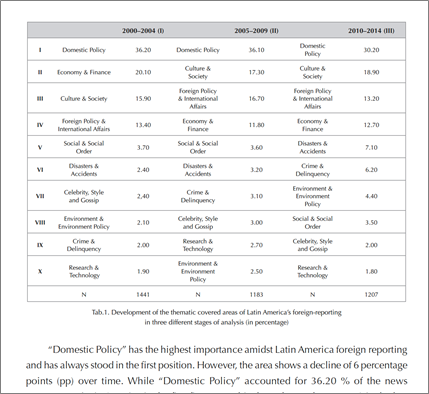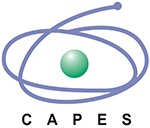|
|
1. Authors should verify that they have followed all submission guidelines. If they are not followed, the text may be rejected. The Editorial Board of Galaxia journal accepts, in a continuous flow, original and unpublished works (of individual or collective authorship) by doctoral students or doctors, in the form of scientific articles effectively linked to research in the field of communication, as well as reviews in the area of Communication. At the end of the page there is a table with the formatting rules. If the paper has been published before in conference proceedings, check if you have incorporated changes to it. Papers are submitted to an anti-plagiarism program, in which case there must be at least 30% changes. Such incorporations must be explicit in the text itself. Other types of self-plagiarism are not accepted. If you need to use previously published texts, quote them according to current rules. Never incorporate excerpts without citing, as this characterizes self-plagiarism. We do not accept translations of articles published in foreign journals.
2. The texts must be submitted in Word, in their final version (preliminary versions will not be accepted) in the journal's system, after the author establishes, as AUTHOR, a login and a password. If the author wishes to publish in a preprint, he must do so only in the Scielo system, pending the reviews. The file must be saved in doc or docx and must not exceed 2MB.
3. Collaborations can be submitted in five languages: Portuguese, Spanish, French, Italian or English and should not be in the process of being evaluated for publication in another journal; specific cases must be justified in "Comments to the Editor". In the case of articles in languages other than English, abstracts must be sent in the original language, in English and in Portuguese.
4. When submitting your text, the author must include in the journal's system (never in the text) her/his ORCID and its maximum title and indicate the institution and city in which she/he works. Do not leave the Biography Summary item blank. If you are an independent researcher, you must indicate it. You must remove your name and possible references to yourself in the text, notes and bibliographic references, including the Word Properties item. Within the text in place of a reference to you, the expression AUTHOR should be used. If the text is approved, these indications will be added during the final revisions. If there is more than one author, the co-authors must all be nominated in the system, and at the end of the text mention specifically what was the contribution of each co-author. In this case, there is no main author. Everyone must have collaborated in specific ways to carry out the text. No name is accepted as an author without effective participation in the writing of the work, which would constitute fraud. The journal always puts the name of the doctors first. In the case of all doctors, alphabetical order follows. The contribution of co-authors can be: Supervision and Management of the Research Project, Theoretical Foundation and Conceptualization, Data Curation, Writing - First Writing, Writing - Review and Editing, Field Research, Methodology, Formal Corpus Analysis, Obtaining Funding, Resource Management, Software Management, Construction of figures and tables.
5. Text Standardization:
-
Titles and subtitles in the article: in bold, written in the form of a sentence, that is, only the term that opens the sentence is capitalized.
-
The title of the article translated into English must be placed at the beginning of the abstract, not below the title in Portuguese.
-
Separation of the text in topics: in general we do not divide the texts into numbered topics, except when there are several sub-levels and it is absolutely necessary to indicate this thematic hierarchy in the titles and subtitles or in the body of the text.
-
Titles of works, series, book chapters in the body of the text and notes: always in italics - the preference is always the reference (SURNAME, year, p.), Leaving the complete title for bibliographic references. In the references at the end of the text, the titles must follow ABNT, that is, the title in bold, except in chapters, etc. See references in an already published article.
-
Avoid short paragraphs.
-
Highlighted words: avoid quotation marks, always prefer italics for highlights (emphasis). This quote procedure should not be excessive. Its function is to emphasize a concept, to indicate that it is important in the conceptual construction of the text. Foreign words, Latin etc: in italics. Words like “website” and “marketing” must remain in italics, without quotes. Do not capitalize the word "internet". In fact, avoid using capital letters as much as possible, even for words like Science, Country, etc.
-
Use of personal names, companies, etc.: regardless of the language, they should always be written in capital letters without italics, in the case of acronyms of few letters like BBC and with only the first in capital letters in case of bigger acronym, as Petrobrás.
-
Always use a dash (-) instead of a hyphen (-) in the punctuation.
-
Bold characters are prohibited in the body of the text. Galáxia does not use bold letters, except in the references of the works at the end of the text, according to ABNT.
-
Use of the citation - according to ABNT 10520/2002 (ibidem, apud, idem, et al. - regular lowercase, italic, without abbreviation). Do not use the abbreviated terms like ibid. or id.
-
The author's indication must always respect the format (AUTHOR, year, p.xx). More than one author per quote, 1) in the same work (AUTHOR and AUTHOR, year, p. Xx); 2), different works (AUTHOR, year 1, year 2); 3) more than three authors (AUTOR et alii).
-
Citation in the body of the text (up to 3 lines) - Between “double quotes”, without italics.
-
Quotation of the text in 4 cm, single space (more than 3 lines) - without quotes, single space, separated from the body of the text, font (10 points). When suppressing passages, always indicate with square brackets [...], not with parentheses (...).
-
Footnote: only use for lateral clarifications of the text, never for concepts and never for referencing. Avoid extensive footnotes. Do not use a footnote to place translations in the original language. All quotations must be translated when coming from other languages. Put in reference: (FULANO, year, p.xx, our translation).
-
Site information in footnotes or references: Available at: <.......> Accessed: 10 mar. 2020.
-
References: The journal does not use the term "Bibliography" or "Bibliographic references", only "References", never in a footnote, always at the end of the article and only listing the articles, books etc. effectively used.
SURNAME, N. Book .... City: publisher, year.
SURNAME, N .; SURNAME, N. Book .... City: publisher, year.
SURNAME, N. Article. In: Journal ...., volume, number. City: publisher, year.
SURNAME, N. Chapter. In: SURNAME, N. (org.). Work ... City: publisher, year.
-
When the author repeats himself, put ______. (6 counted spaces).
-
When the book has a subtitle, only the Title is in bold, not the subtitle. Only the initial word is capitalized.
-
In the reviews requested by the referees, always use the word correction mechanism in the corrections, so that the changes are highlighted in colors, facilitating the verification.
-
Inserting images and tables:
-
All images must be sent with good resolution and legibility. We suggest that the images be sent in JPG format, apart from the text, in its natural size, with a minimum of 200 / dpi or, preferably, with 300 / dpi. All images must be numbered, with a brief description that will be inserted just below them, in the form of a caption and followed by the source. Ex: Fig 1. Life lived on social networks. Source: Lorem Ipsum (xxxx); Fig 2. Facebook as a contact tool. Source: Lorem Ipsum (xxxx); Fig 3. etc ... The linear positioning of images in the body of the text must also be indicated.

-
All tables must be sent editable, preferably within the body of the text, and must be numbered, with a brief description, inserted just below them, in the form of a caption and followed by the source. Ex: Tab. 1. Fake News visualization in numbers. Source: Lorem Ipsum (xxxx); Tab. 2. 2019 election data. Source: Lorem Ipsum (xxxx); Tab. 3. etc ... The positioning of tables in the body of the text should also be indicated, if they are sent separately

-
Reviews: All reviews must contain a front image of the work's cover with good resolution quality. The work reference on the first page of the review must contain, in that order: Author. Title. City, publisher, year, number of pages. See model in review already published.
6. All scientific articles will be pre-analyzed by the Scientific Editor or by the Associated Editors and may be rejected if it is found that the scope is not complied with or if the scientific content or writing are not suitable for the journal. After this phase, the pre-selected articles will be submitted to two ad hoc reviewers or the Scientific Council. In case of approval and non-recommendation, the text may be revised by the author and sent back to the Editor. Then, the text will go through a third reviewer. For more information about the peer review system adopted by the journal, consult the topic Peer Review Process.
7. The authors are responsible for the content of the articles, including from the ethical point of view and originality of the text and assign the copyright, in this first edition of the text, to Galáxia. After this first publication, the author may publish the work in repositories, or in books of his own, provided that he mentions the original publication in Galáxia.
8. If there is any type of conflict of interest involved or any issue involving ethics, this should be indicated in a note. Everything that involves people is related to ethical issues and should be explicitly mentioned and the responsibility assumed, in order to make it clear that the author took care of the ethical procedures related to the research and writing of the text. The author must also indicate whether there was any research funding involved in the preparation of the research.
9. Papers must be standardized according to NBRs 6023 (bibliographic reference) and 10520 (quote in the body of the text) of the Brazilian Association of Technical Standards (ABNT). The Editorial Board will not accept formatted texts outside these rules. In case of doubt, check the final format in articles already published.
10. Obtaining permission to reproduce illustrations is the responsibility of the author.
11. The Editorial Committee reserves the right to make in the texts all the formal modifications necessary to fit the journal’s graphic design.
12. All Internet page addresses (URLs), included in the text (Ex.: http://www.ibict.br) must be active and ready to click.
13. The author who has published texts will only be republished two years later, even if she/he is a co-author.
|
|




